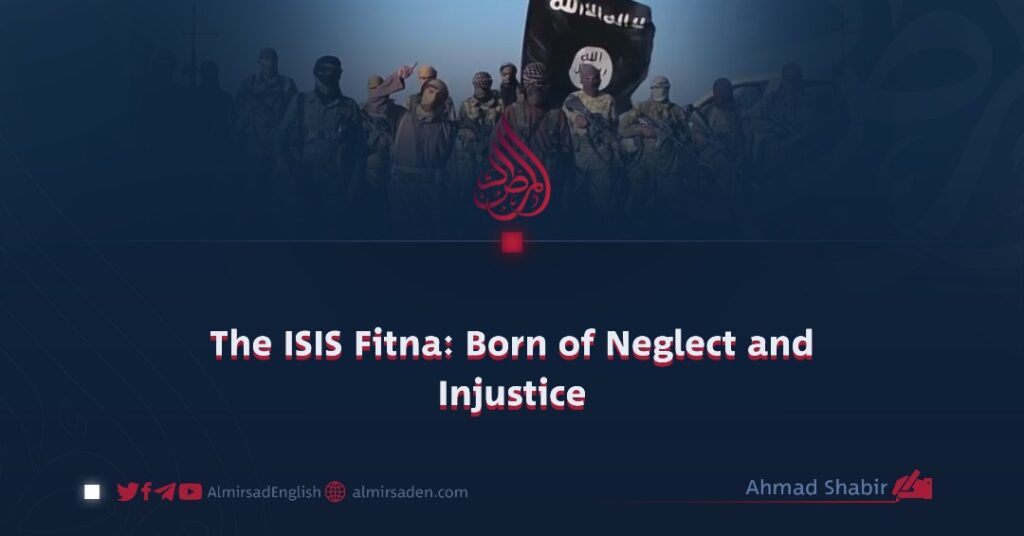By Ahmad Shabir
When ISIS declared its so-called “Islamic Caliphate” in 2014, the world was caught off guard. The announcement emerged from a region already torn apart by occupation, sectarian bloodshed, and political collapse. What followed was not the revival of Islamic governance but the eruption of one of the most destructive seditions in modern history, an upheaval that consumed entire societies and left scars still visible today.
Seeds of Division and Ideological Distortion
ISIS thrived in the wreckage left by years of war and injustice. Sectarian hostility, religious prejudice, and weak governance had already fractured communities, while poverty and despair made many vulnerable to manipulation. Into this chaos stepped a movement that cloaked its ambitions in religious language but hollowed out the essence of Islam.
Claiming to act under divine authority, ISIS redefined sacred concepts such as Jihad, Caliphate, and Hudud, twisting them to justify its cruelty and domination. It stripped Islamic teachings of their moral and scholarly foundations, replacing them with harsh literalism and reckless violence. What began as an ideological deviation soon became an organized campaign of terror and corruption.
The March of Destruction
The capture of Mosul in 2014 marked the peak of ISIS’s power and the beginning of its reign of horror. Within months, vast stretches of Iraq and Syria fell under its control. Behind the illusion of an “Islamic State” lay a regime defined by brutality and repression.
In the areas it occupied, ISIS waged war not only against armed opponents but also against unarmed civilians, scholars, and minorities. Entire communities, including Yazidis, Shias, and Christians, were massacred, enslaved, or driven from their homes. Cities were reduced to rubble, and social fabrics that had been woven over centuries were torn apart in a matter of weeks.
Social and Economic Fault Lines
Beneath the bloodshed lay deeper social and economic wounds. Chronic unemployment, corruption, and decades of inequality had stripped many of hope. In the ruins of failed states and collapsing institutions, ISIS found its opportunity. It offered the desperate a sense of purpose, order, and belonging, though only through subjugation and bloodshed.
Many of those who joined did not do so out of conviction but out of despair. The organization exploited their frustration, turning human suffering into a recruitment tool and misery into a weapon.
Propaganda: The Digital Battlefield
ISIS waged one of the most sophisticated propaganda campaigns in modern history. Through social media, encrypted channels, and high-quality productions, it projected an image of strength and divine legitimacy. Its goal, however, was not to inform but to manipulate, to inflame emotions, sow division, and radicalize the impressionable.
Its media strategy preyed upon grievance and alienation, particularly among young Muslims abroad. By appealing to emotion rather than intellect, it created a virtual battlefield that extended far beyond the frontlines of Iraq and Syria.
The Fall and What Remains
By 2017, the so-called “caliphate” had crumbled under relentless military pressure. Yet the ideology that gave birth to it did not vanish. Its remnants scattered across continents, forming sleeper cells and regional affiliates that keep its violent narrative alive in new forms. Though its territorial rule ended, its intellectual and moral threat remains potent.
Lessons and Responsibilities
If societies are to prevent such tragedies from recurring, they must address the injustices and inequalities that allow extremism to take root. Education, social justice, and moral guidance are the true defenses against radicalization. Islam, when understood through its authentic sources and scholarly tradition, stands as a religion of balance, mercy, and justice, principles that ISIS systematically violated.
Extremism cannot be defeated by force alone. It must be confronted through knowledge, integrity, and moral clarity. Scholars, educators, and community leaders must unite to expose the falsity of extremist claims and restore the true image of Islam.
A Collective Struggle
Every individual bears a role in this intellectual and moral struggle. Awareness, critical thinking, and compassion must replace ignorance, prejudice, and hatred. The youth, in particular, should be guided to channel their energy toward constructive goals and become defenders of peace rather than victims of deception.
ISIS was not merely a militant faction. It was the embodiment of accumulated neglect, injustice, and spiritual decay. It exploited wounds left unhealed by corruption and war, unleashing destruction on an unimaginable scale.
If we fail to confront the roots of this fitna socially, intellectually, and morally, the same darkness will reappear in another form. The path forward lies in justice, education, and the revival of true Islamic values. Only then can our societies be protected from the recurrence of such calamities and move toward lasting peace and dignity.
